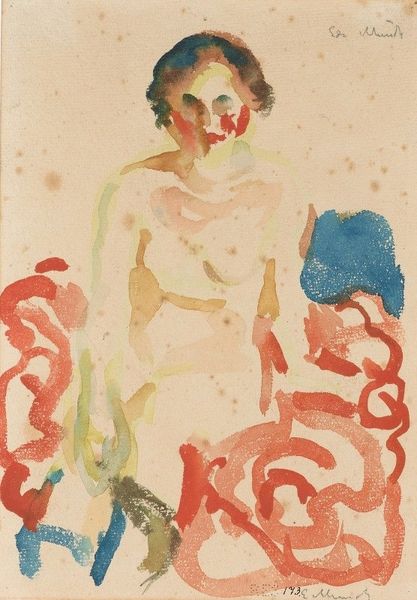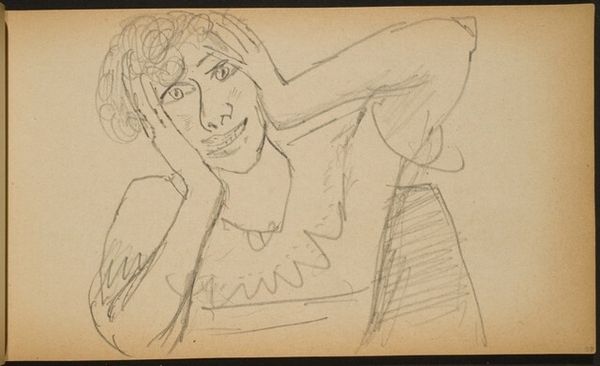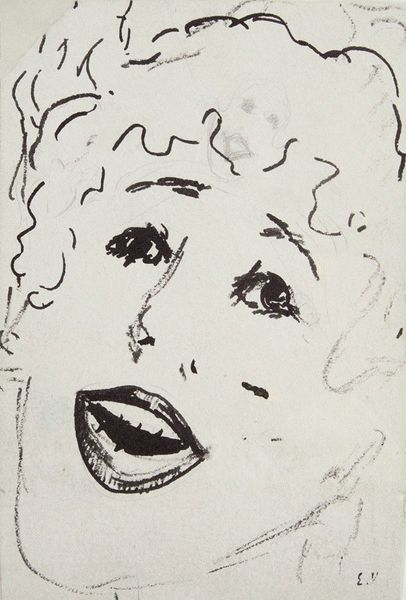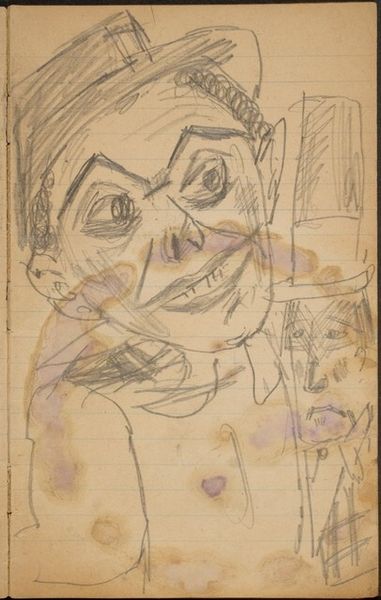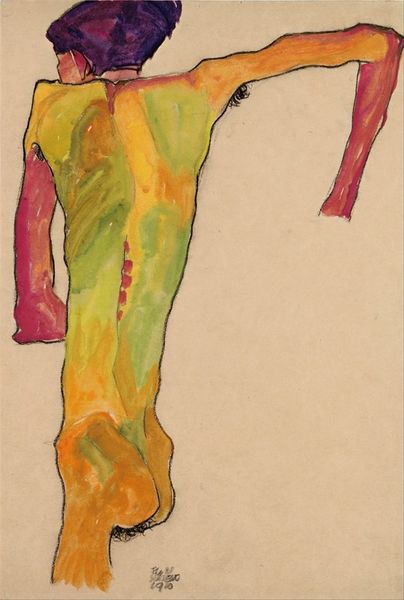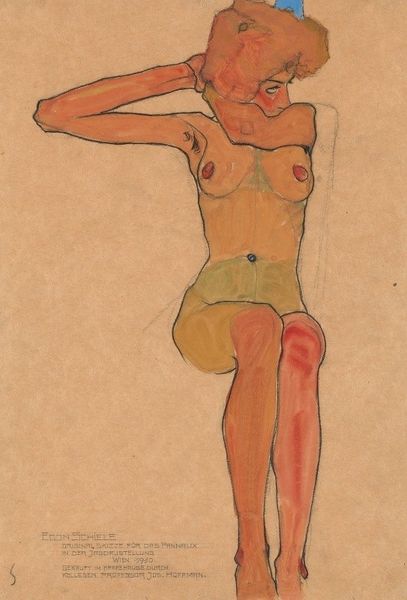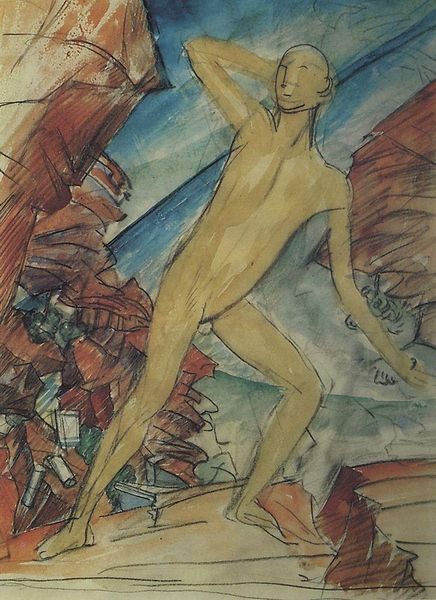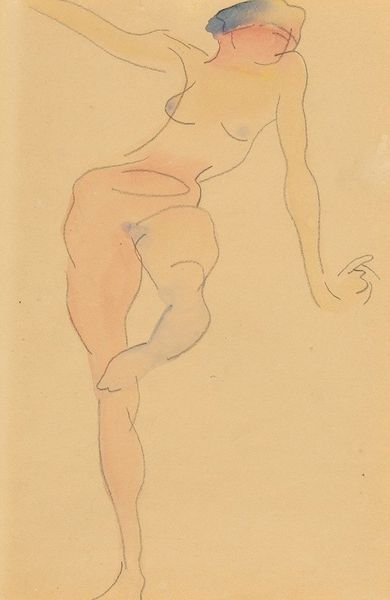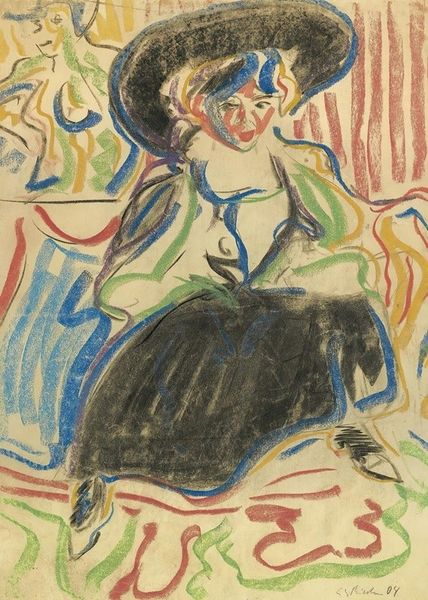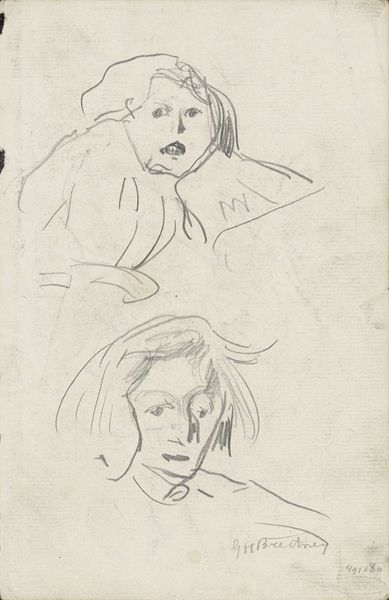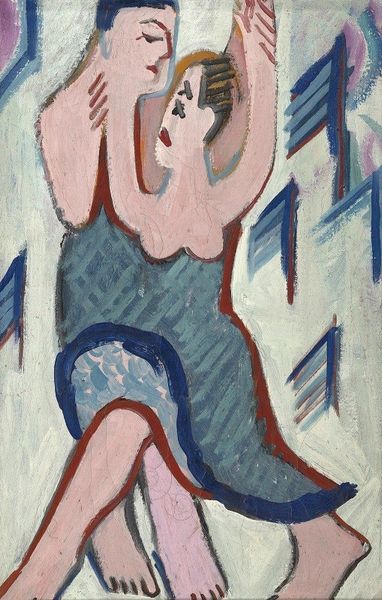
drawing, coloured-pencil
#
portrait
#
drawing
#
coloured-pencil
#
coloured pencil
#
expressionism
Copyright: Public Domain: Artvee
Editor: We're looking at "Cabaret Singer" by Jules Schmalzigaug, a drawing made with coloured pencils. I'm struck by the bold lines and almost exaggerated features; there's something unsettling yet powerful in its raw emotion. How do you interpret this work? Curator: This piece speaks volumes about the artist’s context, and more broadly about the performative spaces available for women. The visible artifice—the heavy makeup, the stylized expression—it's all pointing towards an examination of identity. What power dynamics are at play when a woman presents herself on stage? And, crucially, what socio-economic factors led women into performance in the early 20th century? Editor: That’s interesting! I was focused more on the emotion conveyed but hadn’t considered the social pressures behind it. Do you think Schmalzigaug is critiquing those power dynamics? Curator: I think the artwork is not simply an illustration, but it also invites us to reflect upon women in these entertainment roles. The Expressionist style—with its distortion and emphasis on inner feeling—perhaps highlights the tension between outward performance and inner experience. Think about it in terms of labor, even emotional labor, and whose gaze is truly being served. What do *you* feel when considering that perspective? Editor: It makes me see a layer of vulnerability beneath the surface, even with all that bravado. The intensity of her expression takes on a different meaning. Curator: Exactly. The raw lines are not just stylistic, they reveal a raw, potentially painful truth about the limited roles afforded to women and the constant scrutiny they faced. Editor: Wow, I didn’t even consider it from that angle initially! Thank you. Curator: Art should challenge us to reflect critically on our history and current social structures. This image certainly does that for me.
Comments
No comments
Be the first to comment and join the conversation on the ultimate creative platform.
